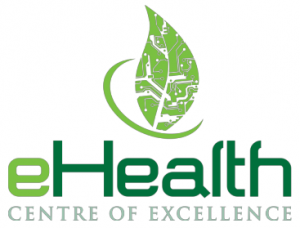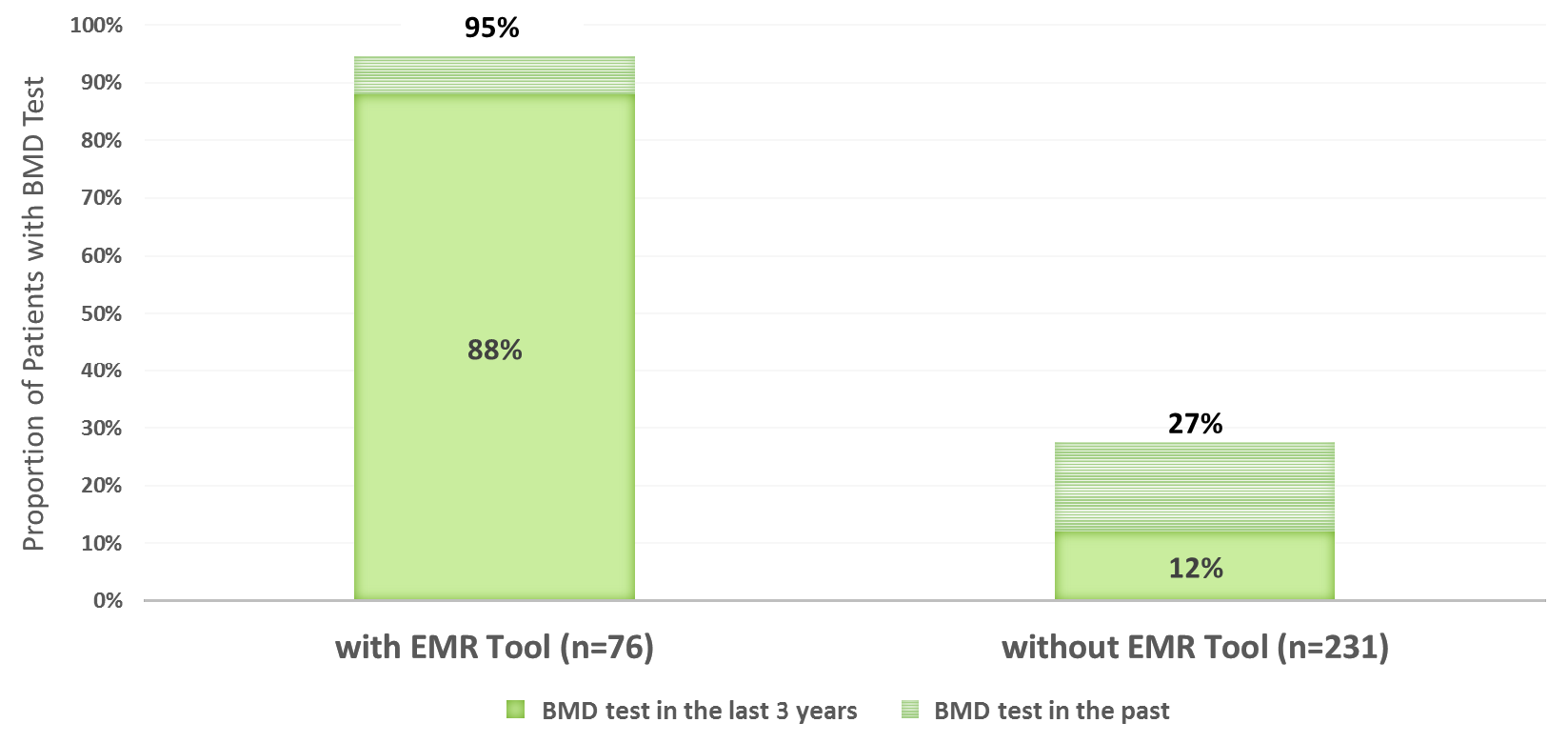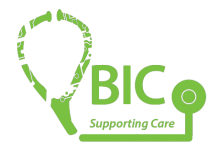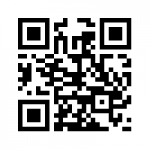A case study on assessing patients’ risk for osteoporosis, facilitating proactive care
July 2020

Background: 1 in 3 women and 1 in 5 men will suffer from an osteoporotic fracture during their lifetime.1 Despite guidelines being available for disease management, screening for the risk of the disease to delay progression is not often conducted on a routine basis.2
To support primary care needs, the eHealth Centre of Excellence collaborated with Osteoporosis Canada to develop an enhanced Telus PS Suite version of the osteoporosis assessment tool originally developed by McMaster University with support from the Ontario Osteoporosis Strategy, translating the 2010 Clinical Practice Guidelines for the Diagnosis and Management of Osteoporosis3 into an EMR tool that offers screening and management options at the point of care.
The tool is used to screen patients at risk for osteoporosis and to improve fragility fractures and falls care. Risk assessments include the Canadian Association of Radiologists and Osteoporosis Canada (CAROC) and the Fracture Risk Assessment Tool (FRAX) combined with a falls assessment tool and risk factor analysis to inform treatment options and provide patient education in delaying disease progression. As part of a quality improvement initiative, Dr. Upe Mehan, a family physician at the Centre for Family Medicine Family Health Team (CFFM FHT), adopted the EMR tool to identify and manage his patient population at risk for osteoporosis and provide a baseline bone mineral density (BMD) test.
The Osteoporosis Assessment EMR decision support tool guides primary care providers through the application of clinical best practices for osteoporosis screening and management, increasing the likelihood of timely screening and treatment to delay disease progression. It also establishes the patient’s risk category, which can be updated when the patient is re-assessed or develops new risk factors.

Testimonial
“Since the start of the initiative, women over the age of 50 with a history of or increased risk factors for fragility (osteoporosis-related) fracture were identified and asked to follow-up for an in-depth clinical assessment to determine their risk profile. It allowed me to ensure that those at risk had received or would be booked for a BMD test and pertinent labs. Based on these results and the clinical assessment, I would ensure appropriate treatment and management options were available to the patient.”
- Dr. Mehan, Family Physician, CFFM FHT

What were the benefits?
The osteoporosis EMR tool has been used to proactively screen and manage patients at risk for osteoporosis. An analysis of EMR data illustrated that patients at risk for osteoporosis managed with the EMR tool were more likely to have a BMD test conducted than those without the EMR tool (p<0.05). Similarly, patients managed with the EMR tool were more likely to have a BMD test conducted within the last 3 years compared to patients managed without the EMR tool (p<0.05). The figure below illustrates the differences.
Of the patients at risk for osteoporosis managed with the EMR tool, 94% had documented treatment(s) according to their risk level.

Using a standardized approach enabled by the EMR tool, Dr. Mehan has developed an updated registry of patients at risk of developing osteoporosis, supporting proactive care and continued monitoring based on best practice recommendations, to prevent fragility (osteoporosis-related) fractures and delay disease progression.
Program Description
QBIC is a program hosted by the eHealth Centre of Excellence in Waterloo, Ontario. The objective of QBIC is to improve the health of residents in Waterloo Wellington by supporting primary care clinicians with digital health solutions that me et their needs and enhance the quality of care they provide.
For more information about the tools and services available, or to book an eHealth Coaching session, please scan the QR code (below) or visit: www.ehealthce.ca/QBIC
Works cited
1. Osteoporosis Canada. (2019). The Osteoporosis Care Gap. Retrieved from http://
fls.osteoporosis.ca/the-osteoporosis-care-gap/
2. McLeod, K., S. Johnson, R. Charturvedi et al. (2015). Bone mineral density screening and its accordance with Canadian clinical practice guidelines from 2000
- 2013: an unchanging landscape in Saskatchewan, Canada. Archived of Osteoporosis.
3. Papaioannou, A. et al. 2010 Clinical Practice Guidelines Osteoporosis: Background and Technical Report.


If you have any questions or would like further information on this case study, contact communications@ehealthce.ca.
Authored by: Jennifer La and Lirije Hyseni, eHealth Centre of Excellence.
Published: January 2020